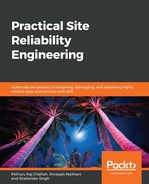Worldwide institutions, individuals, and innovators are keenly embracing cloud technology with all its clarity and confidence. With the faster maturity and stability of cloud environments, there is a distinct growth in building and delivering cloud-native applications, and there are viable articulations and approaches to readily make cloud native software. Traditional and legacy software applications are being meticulously modernized and moved to cloud environments to reap the originally envisaged benefits of the cloud idea. Cloud software engineering is one hot area, drawing the attention of many software engineers across the globe. There are public, private, and hybrid clouds. Recently, we have heard more about edge/fog clouds. Still, there are traditional IT environments that are being considered in the hybrid world.
There are development teams all over the world working in multiple time zones. Due to the diversity and multiplicity of IT systems and business applications, distributed applications are being touted as the way forward. That is, the various components of any software application are being distributed across multiple locations for enabling redundancy enabled high availability. Fault-tolerance, less latency, independent software development, and no vendor lock-in are being given as the reason for the realm of distributed applications. Accordingly, software programming models are being adroitly tweaked so that they deliver optimal performance in the era of distributed and decentralized applications. Multiple development teams working in multiple time zones across the globe have become the new norm in this hybrid world of on-shore and off-shore development.
With the big-data era upon us, we need the most usable and uniquely distributed computing paradigm through the dynamic pool of commoditized servers and inexpensive computers. With the exponential growth of connected devices, the days of device clouds are not too far away. That is, distributed and decentralized devices are bound to be clubbed together in large numbers to form ad hoc and application-specific cloud environments for data capture, ingestion, pre-processing, and analytics. Thus, there is no doubt that the future belongs to distributed computing. The fully matured and stabilized centralized computing is unsustainable due to the need for web-scale applications. Also, the next-generation internet is the internet of digitized things, connected devices, and microservices.
